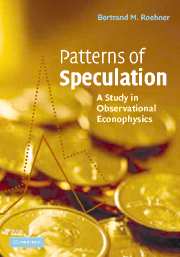2 - THE BEGINNINGS OF ECONOPHYSICS
Published online by Cambridge University Press: 02 December 2009
Summary
In the late eighteenth century G. Galvani and A. Volta investigated the contraction of frog muscles subjected to electrical stimulation. This study culminated in Volta's invention of the electrical battery and can be considered as one of the first studies about physical phenomena in living organisms. Subsequently, in the second half of the nineteenth century, the German electrophysiologist Dubois-Reymond was able to measure the minute currents generated in muscles. These studies about the electric properties of muscles opened the way for a field which after 1920 became known as biophysics. One of the peculiarities of biological phenomena is the fact that there are many more parameters than in physics and that it is more difficult to control themadequately. As a result it is rather difficult to stage experiments that are truly reproducible. In order to be successful early biophysicists had to possess the ability to separate complex biological problems into segments amenable to physical interpretation and experimental testing. As demonstrated by fig. 2.1 the first books and journals whose titles contained the word “biophysics” appeared in the decade 1921–1929. However the real emergence of biophysics as a major cornerstone of modern biology may be attributed to the spectacular success of biophysical tools in unraveling the molecular structure of the deoxyribonucleic acid (DNA) and in establishing the detailed structure of proteins such as hemoglobin.
What is our purpose in recalling the history of biophysics? It seems to us that the analogy between biophysics and econophysics is much deeper than the mere similarity in their denomination.
- Type
- Chapter
- Information
- Patterns of SpeculationA Study in Observational Econophysics, pp. 25 - 36Publisher: Cambridge University PressPrint publication year: 2002



